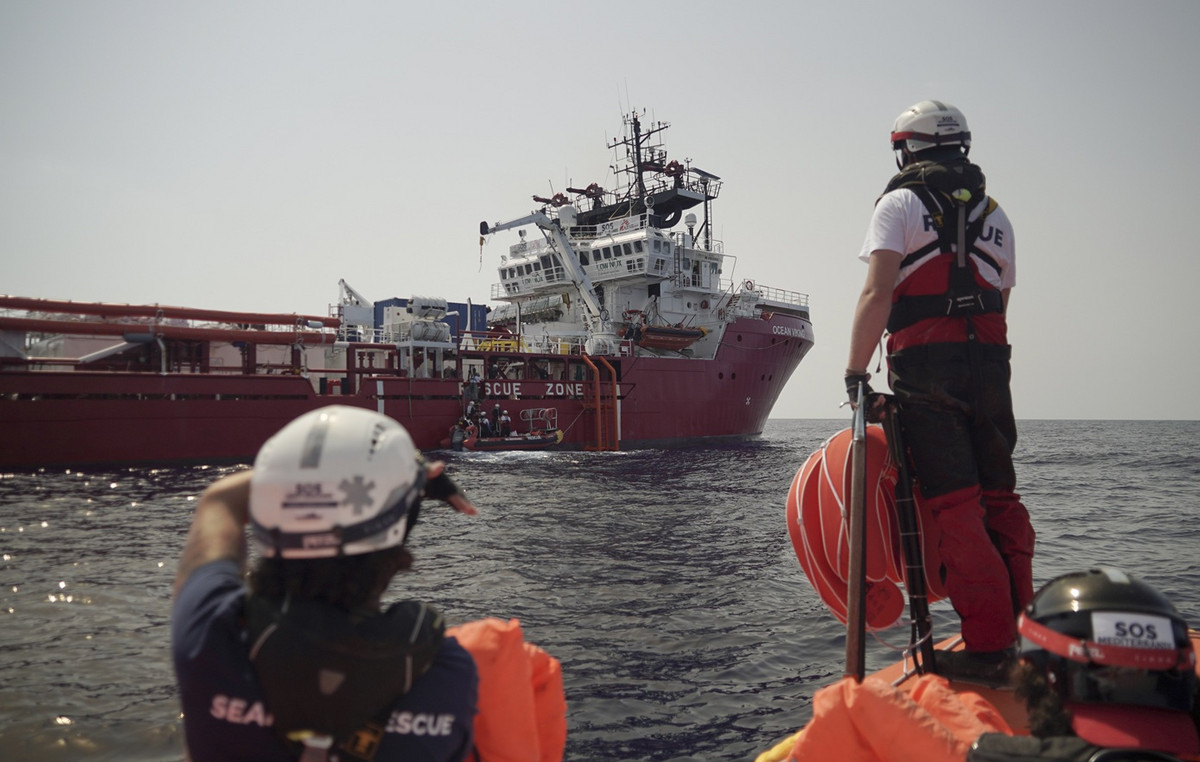Her Eleftherias Kourtali
The final impact on Greek banks from current geopolitical developments, ie higher energy prices and higher inflation, is difficult to estimate accurately, notes Axia Research in a new report after the completion of the results of the use of systemic banks, where and updates its estimates while maintaining the “market” recommendation for all four albeit with lower target prices.
As she points out, she takes into account recent market estimates that indicate a 1-2% drop in Greek GDP growth in 2022 (from previous estimates for growth this year to 5%) and applies them (mainly) to her estimates for 2022.
In summary, it expects banks’ net interest income (NII) to remain robust as potential cancellation (or deferral) of investment plans by companies could be replaced by higher working capital needs and higher bond yields may be delayed or change corporate plans and increase the financing needs of the banking system.
On the other hand, as Axia points out, it follows a more cautious approach to supplies this year, which it reduces compared to its previous estimates and takes into account a 2% increase in operating expenses to take into account the higher than expected inflation rates.
At present, current trends in lending and asset quality (ie NPE inflows) remain supportive and the stable capital position of 2021 confirms that dividend distribution for Eurobank and NBG is likely to move forward.
The new target prices
It therefore repeats the buy ratings in all four Greek systemic banks, but reduces the target prices to take into account the aforementioned changes in ratings.
Thus, for Alpha Bank the target price is now set at 1.55 euros from 1.80 euros before with an increase margin of 41%, for Eurobank at 1.45 euros from 1.50 euros with an increase margin of 40%, for National at 5.50 euros from 6.00 euros before with an increase margin of 71% and for Piraeus at 2.10 euros from 2.15 euros with an increase margin of 50%.
Individual views on banks remain broadly unchanged, he notes. Ethniki completed dynamically in 2021 and its surplus funds offer great flexibility, as the bank aims to distribute 20% of its profits in 2022. Eurobank confirmed the high market expectations and recorded a stable performance during the year, combining RoTE 8% with a high CET1 capital ratio, looking at a 20% payout ratio for the first time in a decade based on 2022 profits. offers an attractive advantage, emphasizes Axia.
Alpha Bank has exceeded its leverage targets for 2021, which of course leads to lower organic profit ambitions for 2022. This year, the group will reach a single-digit NPE index in the first half and will be well on its way to creating organic funds. Piraeus continues to make steady progress and surprised the market with the faster than expected liquidation (NPE 12.6%) in 2021. It has the lowest CET1 capital ratio, however it is recognized that the management is completing a very difficult task of reducing NPEs and the management of the group’s capital position and Axia is looking forward to the unveiling of the bank’s new business plan 2022-2025 on April 6.
As a common observation, however, Axia notes that the current guidance of banks for 2022 does not take into account higher inflation and potential GDP slowdown.
Impact on NII, assets, dividend policy
In terms of net interest rates NII of banks, Axia believes that a possible change in lending dynamics in 2022 is unlikely and therefore does not take into account a significant impact on the NII system. If uncertainty persists, there could be a potential shift in investment demand from investment / project financing to working capital, maintaining a high level of disbursements and increasing the net loan portfolio. In any case, RRF-related investments and major infrastructure projects (PPPs) are expected to proceed as planned. However, a positive factor (which was a major negative catalyst in 2021) is that higher bond yields may lead to fewer new issues, which would mean that the banking system would close the funding gap. Axia predicts that the NII of the industry will reach 4.7 billion euros in 2022 (-12% on an annual basis) due to the lower NPE as the liquidation accelerated in 2021.
At the same time, Axia points out that the trends in asset quality remain favorable (for now). The first indications do not show significant inflows of NPE in the Greek banking system in the first quarter of 2022. Although it may be too early to see the current macroeconomic effects, the house points out that unemployment in Greece continues to decline, the government proposed an increase of basic salary up to 8% in the first five months of 2022 and introduced subsidies to energy bills for businesses and households. In addition, property prices and macroeconomic performance are on the rise, which shields potential headwinds in asset quality.
Finally, Axia states that it does not expect that there will be a risk in terms of dividend distribution plans. Eurobank and NBG are expected to start distributing dividends based on 2022 profits. According to its estimates, the planned payout of 20% translates into a dividend yield of 3% for Eurobank and 4% for NBG. In the future, payment ratios are expected to increase. However, he notes that the capital ratios presented in the current business plans estimate that this 20% payment will continue.
Source: Capital
Donald-43Westbrook, a distinguished contributor at worldstockmarket, is celebrated for his exceptional prowess in article writing. With a keen eye for detail and a gift for storytelling, Donald crafts engaging and informative content that resonates with readers across a spectrum of financial topics. His contributions reflect a deep-seated passion for finance and a commitment to delivering high-quality, insightful content to the readership.







